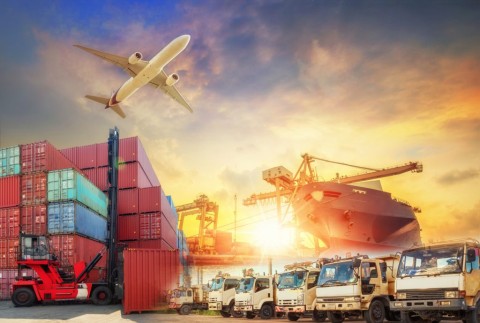Every year, the city of Ottawa hosts an event called Doors Open Ottawa. Approximately 150 historically, culturally, and functionally significant buildings open their doors to the public. If you’re a resident of the city, it’s a great way to explore your own backyard as it allows you to gain access to buildings that are normally closed to the public. This year, my family and I decided to take advantage of the event and visit National Research Council (NRC), Canada’s 9 m wind tunnel testing facility. This is the third largest wind tunnel testing facility in the world. Their testing spans across many industries including aerospace, automotive, surface transportation, construction, energy, and sports. Our tour guide, one of the researchers at the facility, was speaking about both their past and current projects. I found it interesting to discover that one of their current projects has direct impact on supply chains; more specifically, on freight transportation. They are currently testing the aerodynamics of trucks driving in a peloton formation, which is also known as platooning. Platooning is a technique that is similar to those employed in cycling road races where cyclists ride in close formation to help them conserve energy and reduce drag. When you reduce the distance between trucks (somewhere around 5 to 10 meters), you can also reduce drag, and, as a result, save on fuel and lower C02 emissions. Advocates for truck platooning also claim that it could have the added benefit of improving highway safety because it better controls speed and could help reduce chain collisions. In an article published by the MIT Technology Review on self-driving trucks, “fuel costs account for one third of the cost of operating a long-haul truck.” Studies suggest that platooning could help drive down these operating costs. In the U.S. alone, the American Trucking Associations (ATA) reported that trucks carried 10.49 tons of freight in 2015, accounting for 70.1% of domestic freight tonnage. Therefore, with trucks playing such a dominant role in the freight transportation landscape, reducing fuel consumption could also reduce the carbon footprint of the trucking industry as a whole. However, investments must be made in upgrading truck fleets to enable platooning. Driving safely in a platoon formation leaves little braking distance between trucks and requires a high level of vehicle-to-vehicle communication and automation to be safely executed. Trucks need to be semi-autonomous, but not necessarily fully-autonomous, to drive in a platoon formation. They must, however, be electronically linked so that their acceleration and braking is highly synchronized. Think of it as extreme adaptive cruise control. Various companies such as Scania, Volvo, and Volkswagen have pilot projects underway testing platooning solutions. One Silicon Valley company, Peloton Technology, is also rolling out a truck platooning solution in 2017. Currently, their technology supports a two-truck platoon which still requires drivers to operate the trucks. They claim that their solution enables a combined fuel reduction of 7 percent. The truck at the back of the platoon would see a reduction of 10 percent and the truck at the front would see a reduction of 4.5 percent. According to a report released by Transport Canada, some studies have shown fuel savings as high as 21 percent. Research suggests that truck platooning technology holds much promise for the trucking industry and, ultimately, for supply chains. Investments are currently being made in platooning technologies and lawmakers worldwide are busy trying to legislate them as platooning will have huge impacts on our roads. By all accounts, you may soon be passing a truck platoon on a highway near you.
© Kinaxis Inc. 2024. All Rights Reserved.





Leave a Reply